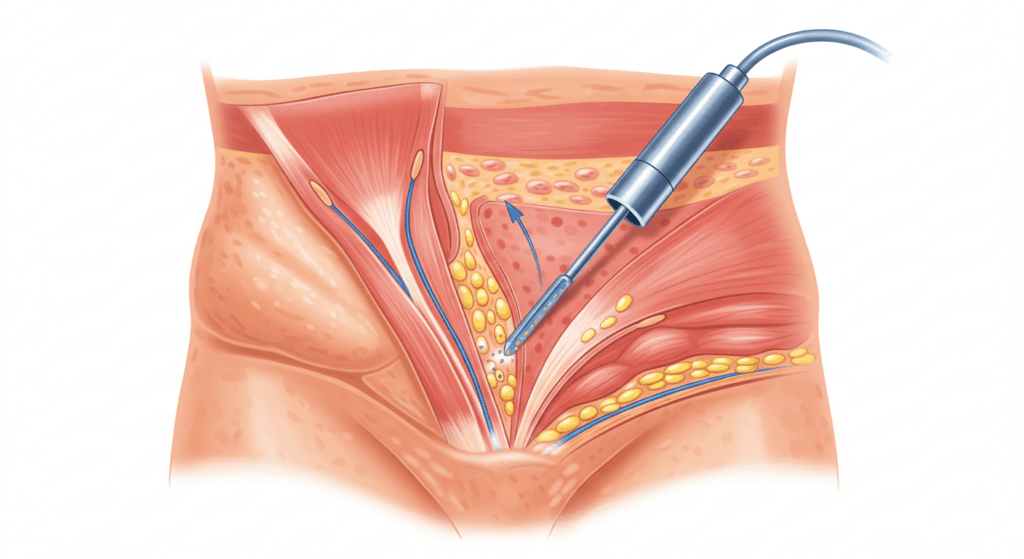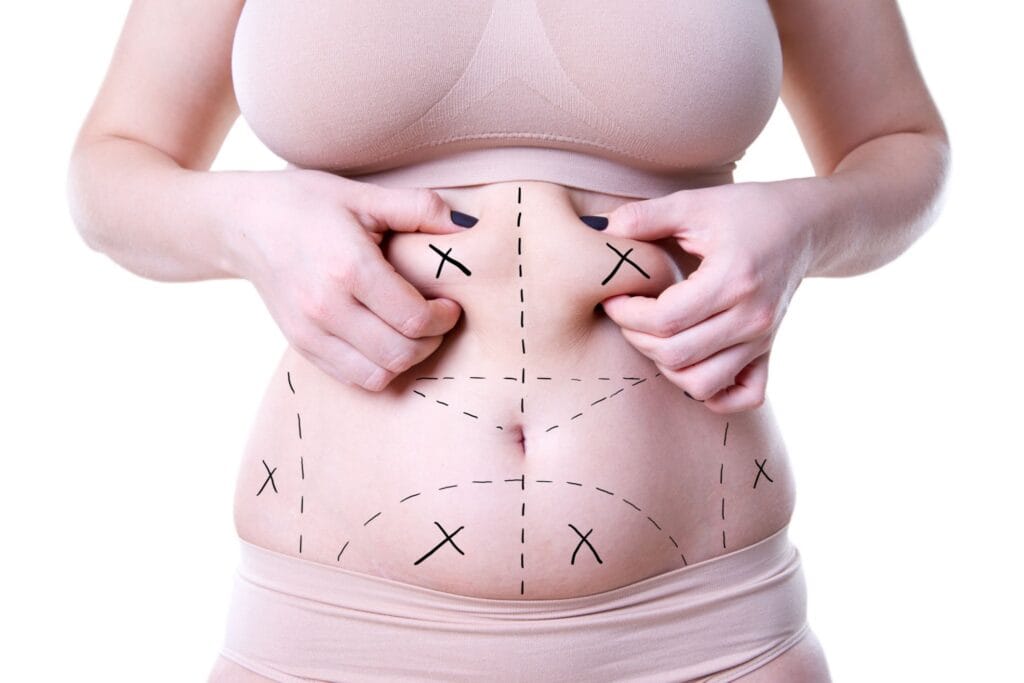Achieving a flatter, more toned abdomen is a common aesthetic goal. While diet and exercise are crucial for overall health and weight management, liposuction can effectively target stubborn pockets of fat resistant to these methods. Abdominal liposuction, specifically, is a surgical procedure designed to remove excess fat from the abdomen, resulting in a more sculpted and defined midsection. This article will explore the procedure, recovery process, and strategies for maintaining long-term results.

Table of Contents
Understanding Abdominal Liposuction
Abdominal liposuction, also known as abdominoplasty, is a cosmetic procedure aimed at removing excess fat deposits from the abdomen. It’s important to understand that it’s not a weight-loss solution; it’s designed for individuals who are already relatively close to their ideal weight but have localized fat deposits that are unresponsive to diet and exercise. The procedure targets subcutaneous fat, the layer of fat just beneath the skin. It’s crucial to have realistic expectations; liposuction will not eliminate loose skin or strengthen abdominal muscles.
The procedure is typically performed under general anesthesia or local anesthesia with sedation. The surgeon makes small incisions in inconspicuous areas, usually near the abdomen’s natural creases. A cannula, a thin, hollow tube, is inserted through these incisions to break up and suction out the fat cells. The amount of fat removed depends on the individual’s body composition, the extent of fat deposits, and the surgeon’s assessment. Different techniques, such as tumescent liposuction (using a fluid solution to numb and shrink the fat cells), ultrasound-assisted liposuction (using ultrasound energy to break up fat), and laser-assisted liposuction (using laser energy), may be employed depending on the patient’s needs and the surgeon’s preference.
Candidates for abdominal liposuction are generally healthy individuals with realistic expectations. They should have good skin elasticity and be within a healthy weight range. Individuals with significant excess skin, underlying medical conditions, or unrealistic expectations may not be suitable candidates. A thorough consultation with a board-certified plastic surgeon is essential to determine candidacy and discuss potential risks and benefits. This consultation will involve a physical examination, a discussion of the patient’s goals, and an assessment of their overall health.
Before undergoing the procedure, patients will need to undergo a series of pre-operative assessments, including blood tests and potentially an electrocardiogram (ECG). They will also receive detailed instructions on preparing for the surgery, including dietary restrictions and medication adjustments. Open communication with the surgeon is crucial throughout the entire process to ensure a smooth and successful outcome.

The Procedure: What to Expect
The procedure itself typically lasts between one and three hours, depending on the extent of the liposuction. The surgeon will make small incisions, usually in inconspicuous locations, to insert the cannula. During the procedure, the surgeon carefully maneuvers the cannula to break up and remove the fat cells. The technique used will depend on the individual’s needs and the surgeon’s expertise. Tumescent liposuction, for example, involves injecting a solution into the treatment area to numb the tissue, reduce bleeding, and make fat removal easier.
Throughout the procedure, the surgeon monitors the patient’s vital signs and ensures their comfort and safety. Once the desired amount of fat has been removed, the incisions are closed with sutures or surgical tape. A compression garment is then applied to minimize swelling and support the healing process. Patients are typically discharged on the same day, although overnight observation may be necessary in some cases. Post-operative pain is usually manageable with prescribed medication.
The immediate post-operative period will involve some discomfort, swelling, and bruising. This is a normal part of the healing process and typically subsides within a few weeks. Patients will need to wear a compression garment for several weeks to help reduce swelling and support the skin. The surgeon will provide detailed instructions on post-operative care, including wound care, pain management, and activity restrictions. Regular follow-up appointments are scheduled to monitor healing progress and address any concerns.
The initial results of abdominal liposuction are often visible immediately after the procedure, but the final results are typically seen after several months as the swelling subsides. The improvement in abdominal contour will be gradual, with the full effect becoming apparent as the body heals and the skin adapts to its new shape. It’s important to remember that the results are permanent, provided the patient maintains a stable weight.
Recovery and Aftercare Advice
The recovery period after abdominal liposuction varies depending on the extent of the procedure and the individual’s healing response. Most patients experience some discomfort, swelling, and bruising in the treated area. Pain is usually manageable with prescribed pain medication. Swelling typically peaks within the first few days and gradually subsides over several weeks. Bruising may last for several weeks as well.
During the recovery period, it’s crucial to follow the surgeon’s instructions carefully. This includes wearing a compression garment as directed, taking prescribed medications as instructed, and avoiding strenuous activities. Patients should also maintain a healthy diet and stay well-hydrated to support the healing process. Regular follow-up appointments with the surgeon are essential to monitor progress and address any concerns.
Patients should expect some limitations on their physical activity during the initial recovery phase. Strenuous exercise should be avoided for several weeks to allow the tissues to heal properly. Gradually increasing activity levels as tolerated is recommended. Patients should also avoid activities that could put excessive pressure on the abdomen, such as heavy lifting. It’s important to listen to your body and avoid pushing yourself too hard during recovery.
Adequate rest is crucial for optimal healing. Getting enough sleep and avoiding excessive physical exertion will help the body recover more efficiently. Maintaining a healthy diet and staying well-hydrated are also important aspects of post-operative care. Following the surgeon’s instructions diligently and attending all scheduled follow-up appointments will significantly contribute to a successful recovery.
Achieving Long-Term Results
Maintaining the results of abdominal liposuction requires a commitment to a healthy lifestyle. While the procedure removes fat cells, it doesn’t prevent the formation of new fat cells. Therefore, maintaining a stable weight through a balanced diet and regular exercise is crucial for preserving the results. A healthy diet should include a variety of fruits, vegetables, lean proteins, and whole grains.
Regular exercise is essential for maintaining a healthy weight and overall fitness. A combination of cardiovascular exercise and strength training is recommended. Cardiovascular exercise helps burn calories and improve cardiovascular health, while strength training helps build muscle mass and improve metabolism. Finding activities you enjoy and can stick with long-term is key to success.
Maintaining a healthy weight is the most important factor in preserving the results of abdominal liposuction. Significant weight fluctuations can lead to changes in body shape and potentially negate the effects of the procedure. It’s important to maintain a balanced diet and regular exercise routine to prevent significant weight gain or loss. Regular check-ups with your doctor or surgeon can help monitor your progress and address any concerns.
Beyond diet and exercise, maintaining a healthy lifestyle overall contributes to long-term results. This includes getting enough sleep, managing stress effectively, and avoiding excessive alcohol consumption. These factors can influence overall health and well-being, which in turn can affect the body’s ability to maintain a healthy weight and preserve the results of the procedure. A holistic approach to health and wellness is essential for achieving and maintaining long-term success.
Abdominal liposuction can be an effective way to achieve a flatter, more defined abdomen for suitable candidates. However, it’s crucial to have realistic expectations and understand that it’s a cosmetic procedure, not a weight-loss solution. By following the surgeon’s instructions carefully during recovery and committing to a healthy lifestyle long-term, patients can significantly improve their chances of achieving and maintaining their desired results. Always consult with a board-certified plastic surgeon to determine if abdominal liposuction is the right option for you.
Transform Your Confidence with Surgyteam!
Join the thousands of satisfied patients who have experienced the exceptional care and expertise of Surgyteam’s renowned plastic surgeons. Whether you’re seeking aesthetic enhancements or reconstructive surgery, our dedicated team in Antalya is here to provide you with the highest quality treatment and personalized care.



